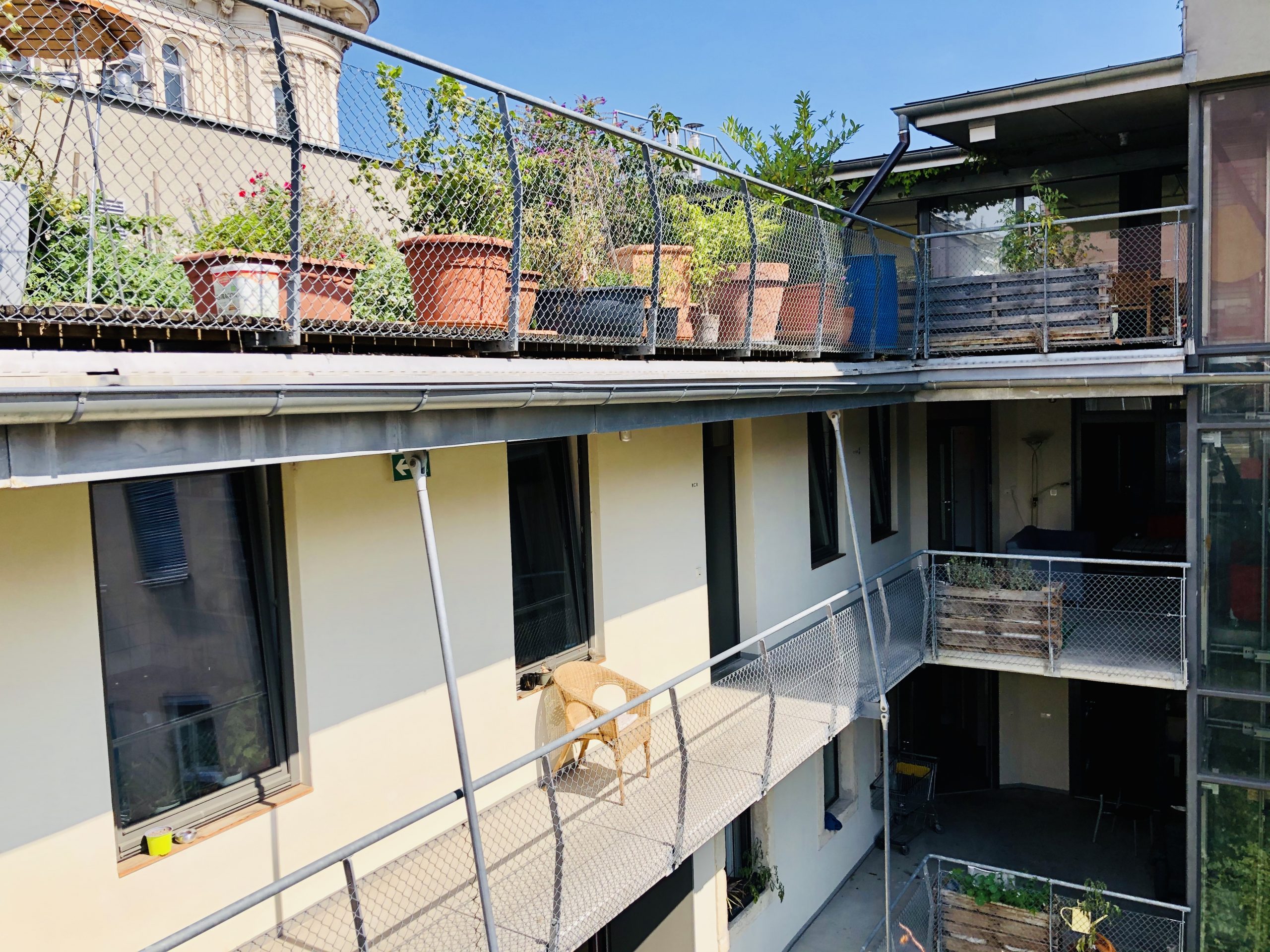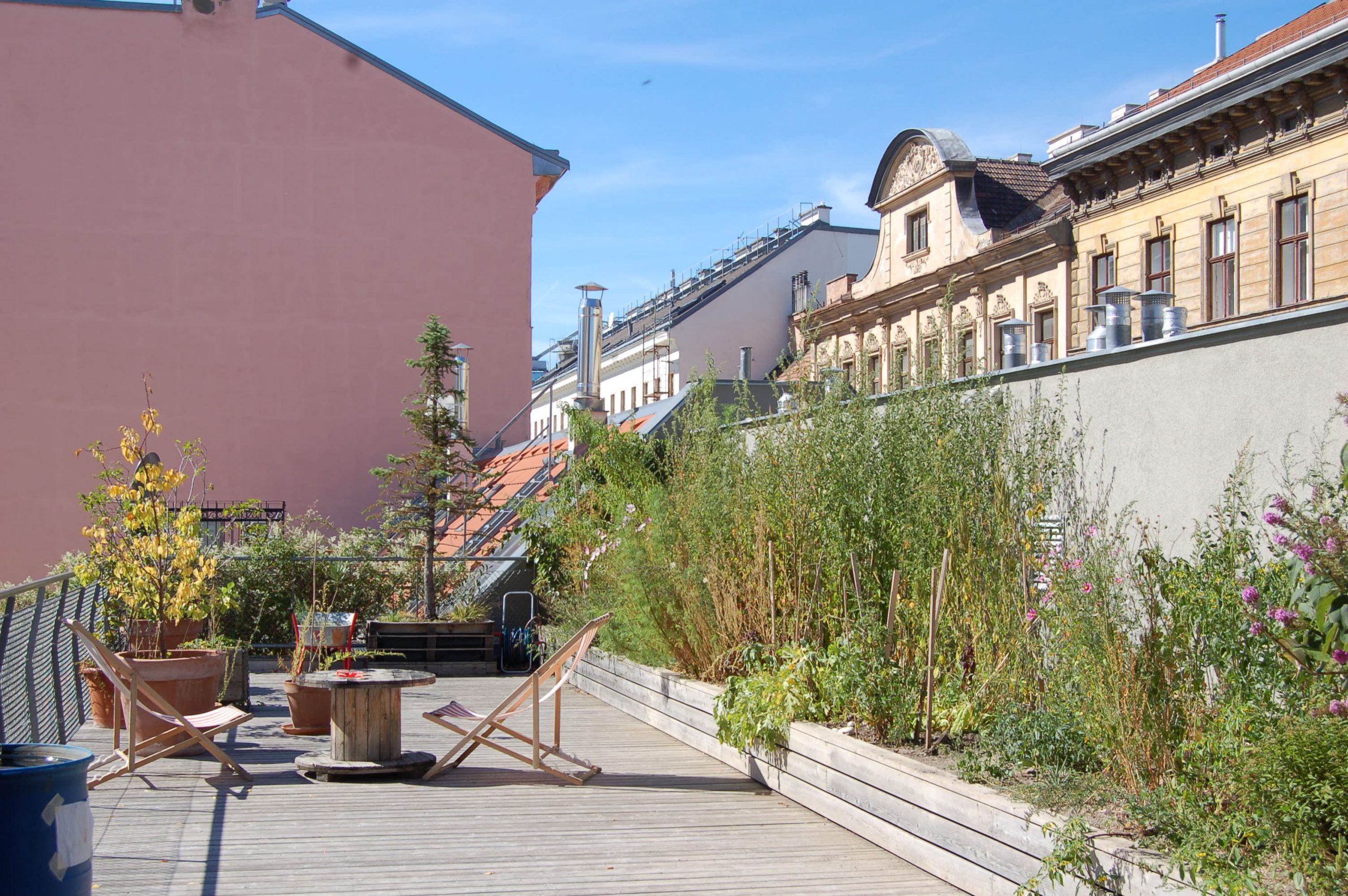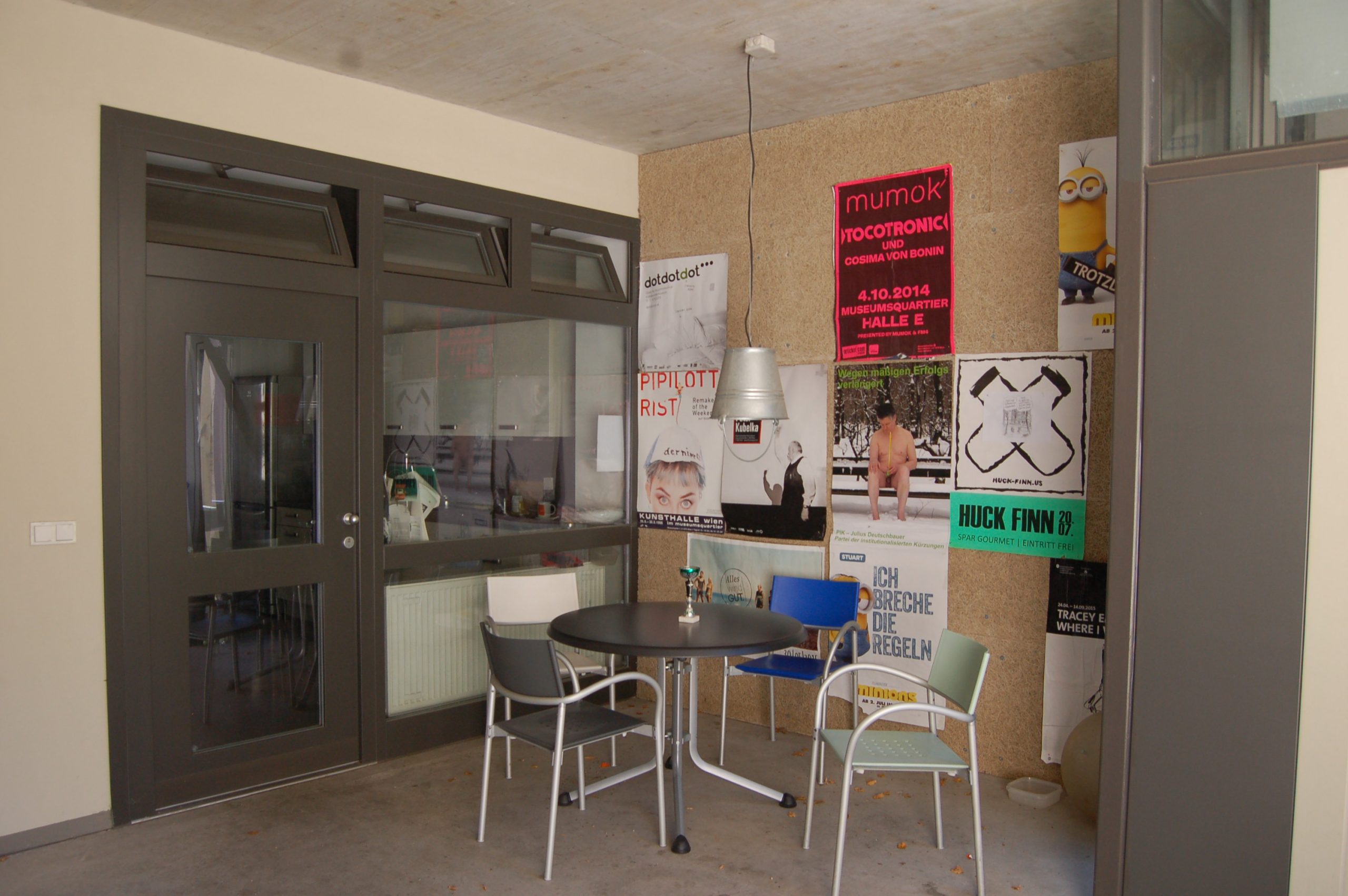A four-storey historical building in the heart of Vienna that houses bicycle, woodworking and sewing workshops, a restaurant serving international cuisine and a café hosting events sounds like a hipster tourist trap. In reality, though, it is a social initiative by VinziRast, an ambitious volunteer-based organisation, that aims to give a second chance at life for refugees and formerly homeless people. The story of VinziRast, with its various spaces and projects is a tale of solidarity and social change, and VinziRast-Mittendrin is one of the organisation’s most inspiring initiatives.
VinziRast is a particularly active organisation that runs several projects. Their first shelter for refugees, VinziRast Home, opened in 2003 in Vienna’s 12th district. The house hosts six asylees, and an alcohol addiction treatment program for another six people called VinziRast WG. VinziRast Notschlafstelle is an emergency night shelter offering short-term accommodation (a maximum of 30 nights in a row) that gives people living on the streets a bed, a warm dinner and breakfast. CortiHaus also offers a permanent living space for homeless people, but it is not explicitly intended for refugees. Last but not least, VinziChance is an educational program giving asylum seekers the opportunity to learn German and to attend workshops, as they are not allowed to work and earn any money while waiting for news. Asylum seekers only receive around €350/month, so they agree on helping out with the activities of the organisation in exchange for a place to stay.
VinziRast-mittendrin and Lokal mittendrin
During Uni brennt (University is burning), a large student protest against the introduction of the Bologna process that took place in Vienna in 2009, a group of students, volunteers and homeless people spotted an empty building they wanted to use to open a community living space. The CEO of Strabag, who was personally committed in charity, supported them in buying the building and asked Cecily Corti, the founder of VinziRast, if she would agree to make that become one of their projects. And that is the beginning of VinziRast mittendrin and Lokal mittendrin, the restaurant run by VinziRast.
It was the first time in Vienna to conceive a homeless (and refugee) shelter combined with student housing, a restaurant and workshops, so everybody had to join forces and build everything from scratch. Students, volunteers, the first homeless groups and refugees who decided to take part in this experiment began to live there together, and after a while a living community was formed, valorising the diversity of its members. It became a safe and welcoming environment for all the 26 tenants.
The place
When conceiving VinziRast-mittendrin, the architects designed the place to be cosy and inviting, but not pretentious nor “classy.” Tenants appreciate the result very much because it is in Vienna’s city centre and its openness allowed them to establish communication and links with the neighbourhood. With its the restaurant and the café, VinziRast mittendrin can offer affordable and welcoming options to anyone from the neighbourhood and beyond.
Renate Hornstein takes care of animating the community and communicating in the public relations/social media marketing field for VinziRast. We asked her about the story of establishing the venue and its activities.
Relying on the involvement of future tenants, what method did VinziRast choose for the renovation of the building?
“It took us nine months to empty the building, and during that time a very successful initiative helped us pave the way for our future success: according to Austrian law, the wooden crates you usually find in food markets cannot be used more than once. One nearby empty shop let us use the space for half a year in order to upcycle those boxes and build furniture and various objects. The future tenants volunteered in renovating the building and used the wooden crates to line walls and the ceiling of the restaurant, learning something new and gaining self-confidence. We organised a flea market to sell the handicrafts and the many items we found in the building while we were emptying it. This was the first contact with the neighbourhood. Some of these handicrafts have also been used to furnish the restaurant – except for the chairs, the other pieces of furniture are all different from one another – even the table legs! This created a colourful and varied look. We definitely didn’t want this place to look like an ordinary homeless canteen – nobody would have enjoyed it.”

How did the neighbourhood react to VinziRast’s arrival in the beginning?
“The initial reaction was not fantastic. Almost everybody will tell you that projects for homeless people are great initiatives, but in the end, when it comes to taking a stance, people are reluctant to have them next to their homes. The only thing that eventually saved the project was the students’ participation: sadly, it was reassuring for them to see that the newly-founded environment was being analysed, therefore under control.”
VinziRast is the only organisation that is ready to host anybody, even people without papers – this would be impossible if they decided to receive any sort of public funding. Whenever somebody from other organisations addresses them to VinziRast, they invite the newcomer over and establish a first contact.
How do the tenants get selected, and how long can they stay?
“VinziRast grants each homeless person the possibility to stay up to three years, while students can generally stay up to two years. For homeless people it can take a longer time to adapt to this new place and to eventually leave it – we work with people, not with machines, so yes, exceptions exist. Gut feeling plays the biggest role in this – a formal round of interviews wouldn’t work better anyway. During the first meeting, we always talk very openly and directly, giving feedback to them first and only later to social workers. We make the newcomer meet the flatmates and leave them with one another for a while. If everybody is satisfied, and if the newcomer is mentally stable enough to live in a community (as some of them never really had any healthy social relationship before), the rest is quick and easy: registration, contract, the person’s photograph to stick to the door and notification to be sent to the authorities.”
Working in Lokal Mittendrin, and living above it
“It was very important for VinziRast not to underline that Lokal mittendrin is rather a social project than a restaurant, and that formerly homeless people work there – and live upstairs, in VinziRast mittendrin. That would have created prejudice, either good or bad, and that would have slowed down the inclusion process.”

Are there any particular features you specially conceived in order to facilitate the community building process among the people who live here?
“The building has ten flats distributed over three floors. Each flat has two to three rooms, a bathroom and a small private kitchen, but there is also a common kitchen and a community area at each floor. It was built in such a way that encourages socialisation, yet everybody always has the chance to retreat in their room if they need time alone. In order to avoid possible conflicts due to stress, disagreements and sometimes heavy drinking, we decided to build two accesses to the common kitchens in order to separate the people arguing, calm them down and try to solve the issue. Luckily, VinziRast didn’t experience many episodes of socially dangerous behaviour and had to immediately terminate the contract for the sake of the other people and, of course, for the sake of the whole project, only a couple times so far.”
How do homeless persons, migrants and students mix in the building?
“Ideally, each flat should always be mixed, meaning there should always be at least one student or a former homeless person. Unfortunately, in practice, this is not always possible: the demand from homeless people is usually higher than the demand from students. Nevertheless, balance is very important and must be monitored, as this project wouldn’t work with only a couple of students. Another very important factor is language – at least one third of the people must be fluent in German in order to help others learn the language.”
How can tenants afford rent?
“The current minimum social security benefit given to unemployed and homeless people in Austria is roughly €830/month. Each person who wants to move in pays a fair, affordable rent. One aspect many people don’t often consider is the fact that the minimum social security benefit is equal for everyone, so even most students living here don’t have more than that monthly income. Some people cannot always afford their rent, so when needed, they take over a couple extra monthly tasks they can do in exchange for their rent. People are not paid here – they get a place to live in, they learn new things (such as the bicycle, woodworking and sewing workshops) and build their skills to restart their lives. Their little state support must unfortunately suffice to cover their other monthly expenses, although every now and then VinziRast finds its way to subsidise extra activities for the group – after all, what we do here is building community. Thanks to this community building process, some of the people who used to live here now live on their own and work as employees of the restaurant. The former tenants who now live independently have a regular income without extra state support, apart from possibly Mietbeihilfe (funding for rent), or compensation in case they work only part time and their income is lower than the national minimum standard. What matters is to take the next step towards independence. Of course, each person has their own time and pace.”

Turnover and moving out
“The turnover rate is very high among students, as they might go study somewhere else, quit or move in together with their partner, for example. As for the former homeless and the refugees, there eventually comes a moment when they feel and show they need to move on and go live on their own in the larger society.”
How can civil initiatives and community-building processes like VinziRast be used as tools against poverty and social exclusion?
“The concept of community in most of the world implies more the fact that like-minded people stay together and have little or no contact with different groups, thus they build “compartmentalised communities.” In the case of VinziRast, many people understood who we are and where we come from later, and finally we started to communicate. Homelessness is part of society, whether we like it or not. We can’t ignore this fact, nor can we abandon the homeless.”
What are the plans for the farm and greenhouse VinziRast am Land?
On about one hectare of open land and in our greenhouse, over 80 vegetable varieties will be grown according to the principles of permaculture. The main aim is to employ people who want to return to work. Volunteers and experts will accompany the project. Interns from universities and technical colleges as well as interested guests are always welcome. The harvest will be processed in the farm’s own kitchen, delivered to the VinziRast restaurant Mittendrin.
There will be plenty of space for taking in fresh air and hiking, for sports and games, for relaxing, cooking together, painting and handicrafts – or for voluntary participation in the work in the garden or stable, in the fields or in the workshops. The plan is also offer workshop or seminar facilities in one of our well-equipped seminar rooms.

The crowdfunding campaign for building a large greenhouse received almost €30,000 in the spring of 2020. The opening of VinziRast am Land was planned for spring 2021. However, we have to reckon with delays due to the measures against Covid-19. The necessary renovation work on the building and the construction of the greenhouse cannot start yet. The project is still progressing, only with smaller steps.
What other challenges are you facing due to Covid-19?
The VinziChance project is currently suspended, and the VinziRast Easter market did not take place either. In our homes (VinziRast-CortiHaus and VinziRast-mittendrin) and shared flats (VinziRast-WG and VinziRast-Home) the Corona regulations are being implemented with a great deal of solidarity. We try to adapt as well as possible to the situation. Recently we have started to offer the lunch menu as well as starters and desserts to take away in the restaurant.
A special challenge is our VinziRast emergency sleeping place. Here homeless people sleep together in a large room, including many who fall into the risk group: people over 60 years old and some significantly older, people who are ill, weakened and for whom infection can be life-threatening. And yet our emergency dormitory remains open. Where else would our guests stay?

We have introduced new rules to minimise contact between guests and staff. We have also restructured our volunteer services to protect those employees who are at risk. Now, only younger and healthy people are on duty and we ensure that appropriate protective measures are taken for everyone.
But it is unclear what the coming months will bring and how the operation of the emergency shelter can continue in the current situation. Above all we need financial support, because VinziRast is maintained exclusively through donations.
Please support the work of VinziRast with your donation!
Interview with Renate Hornstein.


